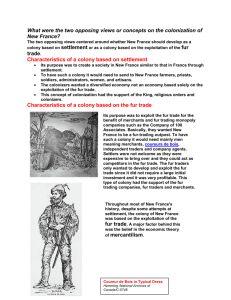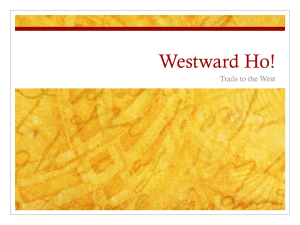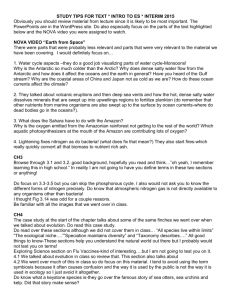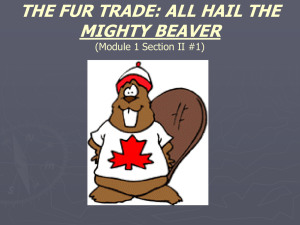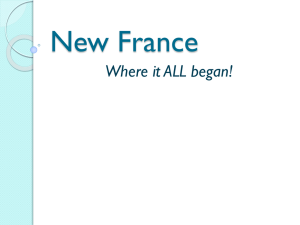What were the two opposing views or concepts on the
advertisement
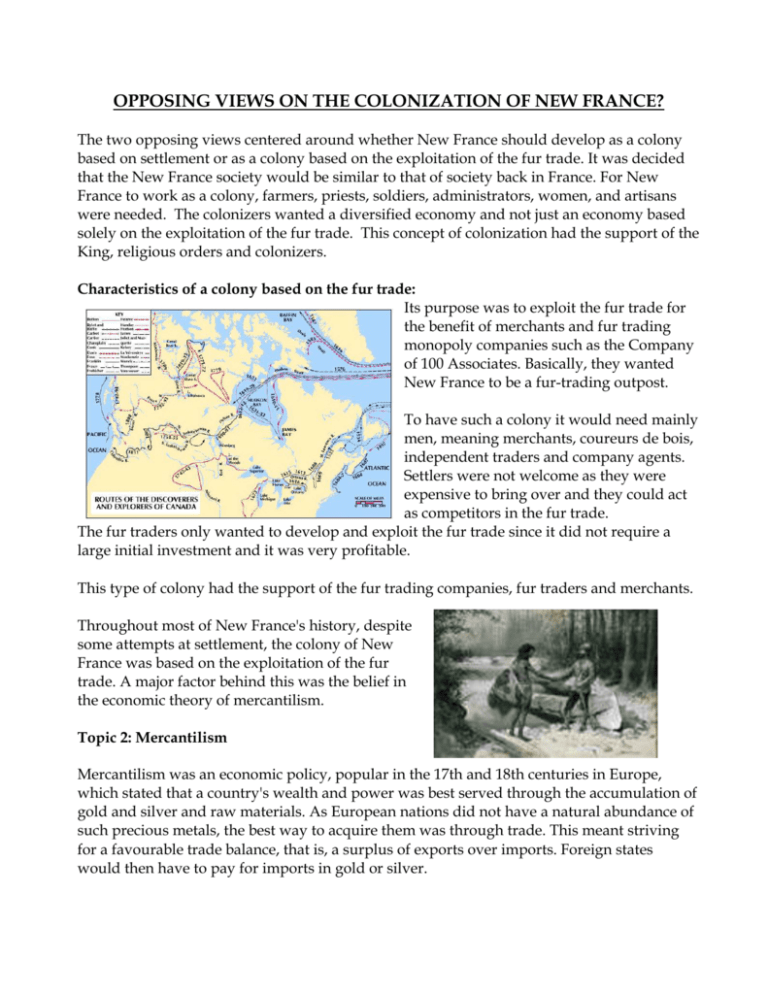
OPPOSING VIEWS ON THE COLONIZATION OF NEW FRANCE? The two opposing views centered around whether New France should develop as a colony based on settlement or as a colony based on the exploitation of the fur trade. It was decided that the New France society would be similar to that of society back in France. For New France to work as a colony, farmers, priests, soldiers, administrators, women, and artisans were needed. The colonizers wanted a diversified economy and not just an economy based solely on the exploitation of the fur trade. This concept of colonization had the support of the King, religious orders and colonizers. Characteristics of a colony based on the fur trade: Its purpose was to exploit the fur trade for the benefit of merchants and fur trading monopoly companies such as the Company of 100 Associates. Basically, they wanted New France to be a fur-trading outpost. To have such a colony it would need mainly men, meaning merchants, coureurs de bois, independent traders and company agents. Settlers were not welcome as they were expensive to bring over and they could act as competitors in the fur trade. The fur traders only wanted to develop and exploit the fur trade since it did not require a large initial investment and it was very profitable. This type of colony had the support of the fur trading companies, fur traders and merchants. Throughout most of New France's history, despite some attempts at settlement, the colony of New France was based on the exploitation of the fur trade. A major factor behind this was the belief in the economic theory of mercantilism. Topic 2: Mercantilism Mercantilism was an economic policy, popular in the 17th and 18th centuries in Europe, which stated that a country's wealth and power was best served through the accumulation of gold and silver and raw materials. As European nations did not have a natural abundance of such precious metals, the best way to acquire them was through trade. This meant striving for a favourable trade balance, that is, a surplus of exports over imports. Foreign states would then have to pay for imports in gold or silver. European merchants exchanged goods with Africans for slaves, shipped the slaves to the Americas, sold them and brought goods from the Americas back to Europe. It was called the triangular trade because of the triangular shape that the three legs of the journey made. Merchants who traded in this way could get very rich indeed as American goods fetched a high price in Europe. The first leg was the journey from Europe to Africa where goods were exchanged for slaves. The second, or middle, leg of the journey was the transportation of slaves to the Americas. It was nicknamed the 'middle passage.' The third and final leg of the journey, was the transport of goods (sugar, rum, tobacco, and molasses) from the Americas back to Europe to be manufactured. The Slave trade became a powerful force in globalization because it linked the economic markets for labor (slaves) capital, goods and service, thus making this process international. Consequences of mercantilism on New France: New France became a trading colony whose main economic role was to supply furs to the mother country and to purchase manufactured products from the mother country. Furs accounted for more than 70% of the colony's exports and the fur trade is directly responsible for the large expansion of territory. Topic 3: Territorial and Military Consequences Territorial Consequences: The most important territorial consequence for New France was the growth of its territory. Over a period of one hundred fifty years New France's territory spread from a tiny colony on the St. Lawrence River to one that extended from the Atlantic to the Prairies, and from the lands surrounding Hudson Bay to the Gulf of Mexico. Military Consequences: The fur trade brought about a series of alliances with the Native populations. The French allied themselves with the Hurons and Algonquians while the Dutch, and later the English, allied themselves with the Iroquois. This led to numerous battles and skirmishes between the Europeans and their Native allies over the control of the fur trade. In 1649, the Huron soldiers suffered great defeats and losses at the hands of the Iroquois, forcing the French to use the coureurs de bois as their middlemen in the fur trade. The expansion of New France's territory also brought about the encirclement of the English colonies. The English felt threatened; the expansion westward and their access to fur resources was now limited. This as well leads to numerous battles and wars and to the eventual conquest of New France by the English in 1760

